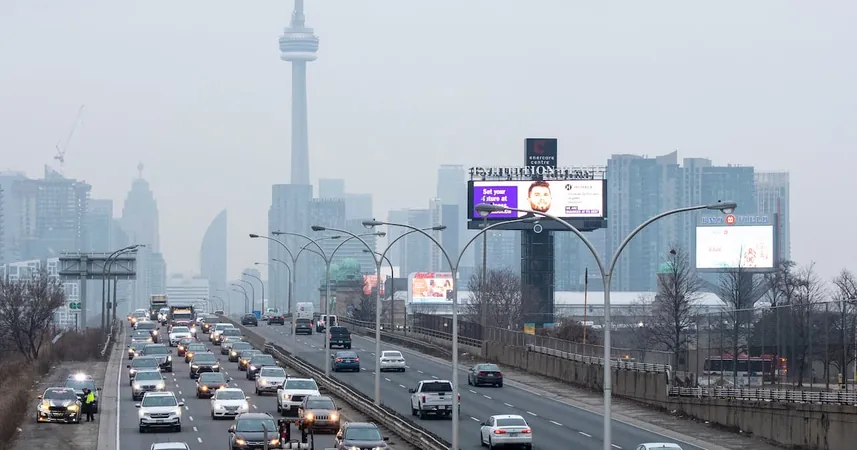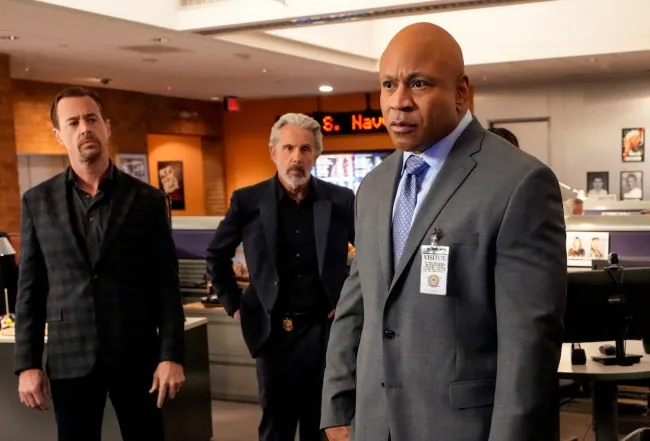
Toronto's Traffic Woes: Construction Reigns Supreme in Congestion Crisis
2025-04-09
Author: Amelia
Construction Chaos Driving Toronto's Traffic Surge
Toronto is facing a traffic nightmare, and a recent report reveals that construction is the biggest culprit behind the city's bumper-to-bumper woes. With a booming population and a staggering rise in vehicle registrations, it's no surprise the roads are jam-packed, but new findings point to construction as the primary aggravator of congestion.
Unprecedented Construction Impact
According to the updated congestion management plan, which will be discussed by the infrastructure committee, Toronto is now the leading North American city for construction activities. This past summer, a staggering 24% of roads were temporarily closed, resulting in travel times that more than doubled. As the population surged by over 125,000 between 2022 and 2023 and vehicle registrations skyrocketed by 26% since 2014, the existing road network—stretching only 5,600 kilometers—has not expanded in decades.
Solutions to Ease the Gridlock
In the face of these challenges, the report offers five strategic recommendations aimed at combating the traffic crisis: 1. Leverage technology to optimize movement and safety for commuters. 2. Enhance transit systems for faster, more reliable service. 3. Implement active management and enforcement at critical intersections. 4. Refine traffic strategies for major special events. 5. Coordinate construction projects city-wide to minimize disruptions.
Boosting Traffic Management
On the transit front, the report recommends expanding the existing signal priority system to minimize delays for TTC vehicles at intersections—a technology installed at 420 cross streets since the mid-90s, with plans to upgrade 50 more by year’s end.
To improve traffic management, the city currently employs 22 traffic agents, with an additional 45 in training, raising the total to 67 by summer. The target is to reach 100 agents by the end of 2025, allowing coverage across more busy corridors.
A Mayor Stuck in Traffic
During a committee discussion, Mayor Olivia Chow, who believes congestion drains Toronto's economy by $11 billion annually, shared her own frustrating experience in traffic—sparked not by construction but by vehicles blocking the intersection during a green light.
"It was infuriating," she exclaimed, addressing the infraction now costing offenders a whopping $450. Chow emphasized the need for more traffic enforcement, particularly if the provincial government allows automated enforcement to crack down on such violations.
Revamping Construction Costs
To address the issue of road blockages due to construction, the city plans to raise fees for companies disrupting traffic. A recent example illustrated the inefficiency of current rates, where a utility contractor closed two lanes of Lake Shore Boulevard for nearly a month for a mere $5,000. Under new proposals, costs for prolonged disruptions would skyrocket, incentivizing quicker project completions.
A Collective Effort Required
Deputy Mayor Mike Colle echoed the need for collective action to improve Toronto's traffic situation, acknowledging there’s no quick fix. He underscored the importance of collaboration among traffic agents, construction companies, and citizens in finding solutions.
Signs of Progress
Despite the chaos, Chow remains optimistic, noting that recent traffic strategies have yielded positive results—showing a drop in transit times of up to 20 minutes on busy corridors. Changes like allowing left turns from Lake Shore Boulevard to Spadina Avenue also demonstrated tangible improvements in travel efficiency.









 Brasil (PT)
Brasil (PT)
 Canada (EN)
Canada (EN)
 Chile (ES)
Chile (ES)
 Česko (CS)
Česko (CS)
 대한민국 (KO)
대한민국 (KO)
 España (ES)
España (ES)
 France (FR)
France (FR)
 Hong Kong (EN)
Hong Kong (EN)
 Italia (IT)
Italia (IT)
 日本 (JA)
日本 (JA)
 Magyarország (HU)
Magyarország (HU)
 Norge (NO)
Norge (NO)
 Polska (PL)
Polska (PL)
 Schweiz (DE)
Schweiz (DE)
 Singapore (EN)
Singapore (EN)
 Sverige (SV)
Sverige (SV)
 Suomi (FI)
Suomi (FI)
 Türkiye (TR)
Türkiye (TR)
 الإمارات العربية المتحدة (AR)
الإمارات العربية المتحدة (AR)